Imperative 的特徵是不斷使用中繼 Variable 傳來傳去,本文示範如何從 Imperative 重構成 FP,並歸納出重構 SOP。
Version
macOS Catalina 10.15.4
VS Code 1.43.2
Quokka 1.0.285
Ramda 0.27.0
Crocks 0.12.4
Wink-fp 1.20.69
Imperative
let data = {
id: 1
}
let makeUrl = id => `https://fpjs.fun/${id}.png`
let f = o => {
let url = makeUrl(o.id)
return { ...o, url }
}
f(data) // ?
第 5 行
let makeUrl = id => `https://fpjs.fun/${id}.png`
makeUrl() 使 id 變成 url。
第 7 行
let f = o => {
let url = makeUrl(o.id)
return { ...o, url }
}
從 object 取得 id 變成 url,再將 url 新增至 object 回傳。
透過中繼 variable 是 imperative 典型作法。
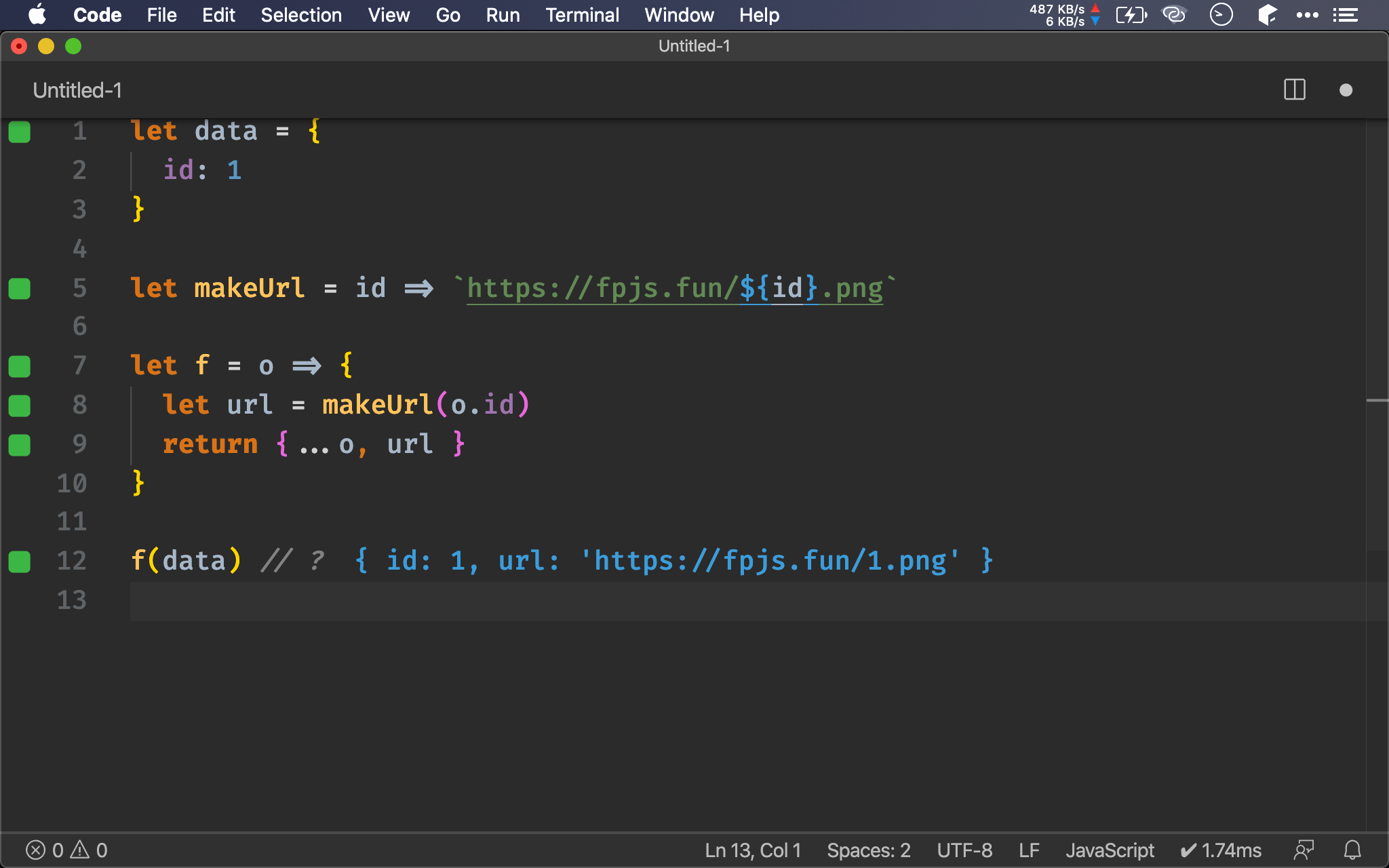
Ramda
import { pipe, assoc } from 'ramda'
import { prop, option } from 'crocks'
import { format } from 'wink-fp'
let data = {
id: 1
}
let makeUrl = format('https://fpjs.fun/{}.png')
let f = o => {
let url = makeUrl(pipe(prop('id'), option('N/A'))(o))
return assoc('url', url, o)
}
f(data) // ?
重構第一步是以 function 取代 operator。
Template string 可用 Wink-fp 的 format() 取代。
. dot operator 可用 Crocks 的 prop() 取代,因為它回傳 maybe,所以必須組合 option()。
新增 property 可用 Ramda 的 assoc() 取代。
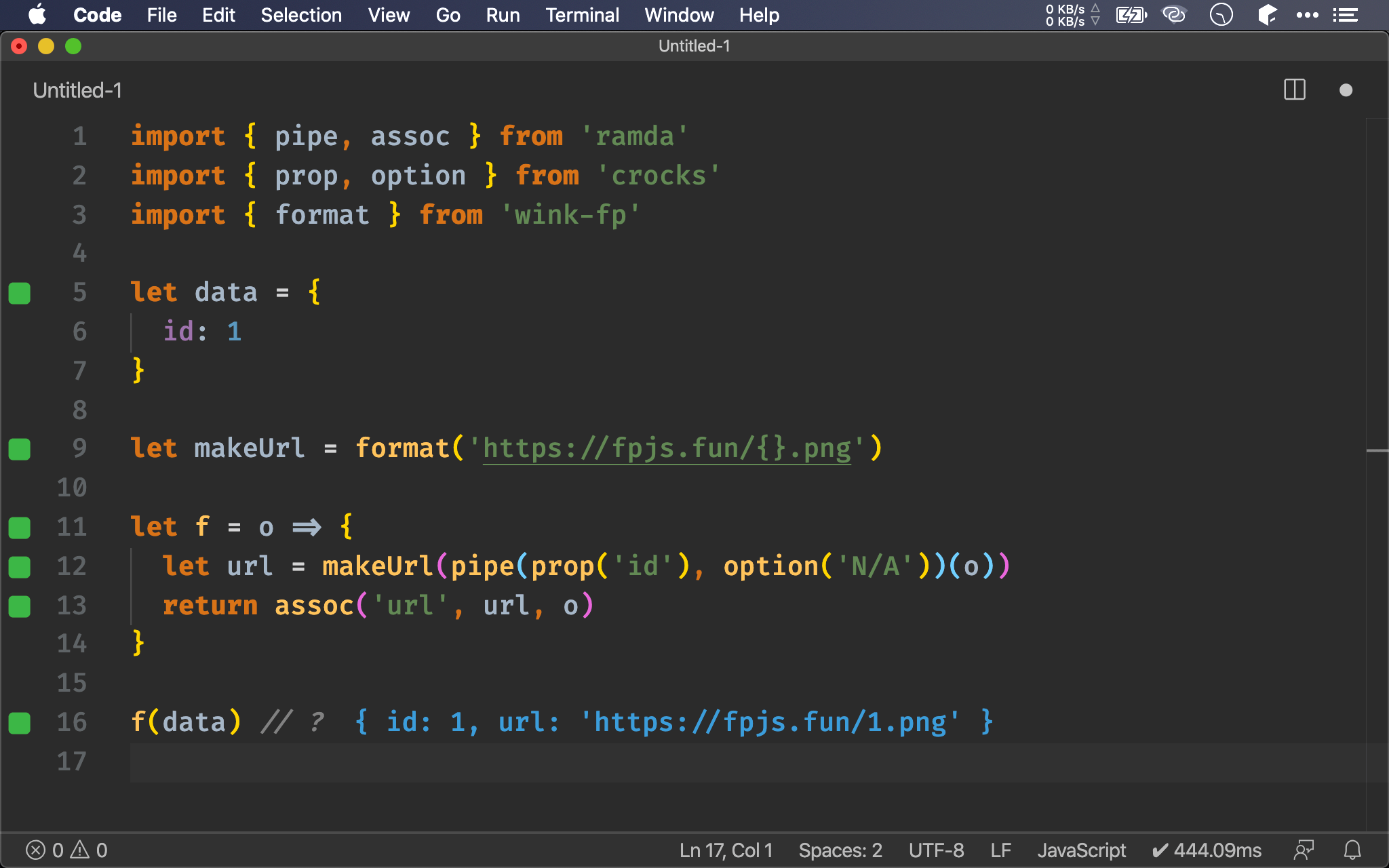
Function Pipeline
import { pipe, assoc } from 'ramda'
import { prop, option } from 'crocks'
import { format } from 'wink-fp'
let data = {
id: 1
}
let makeUrl = format('https://fpjs.fun/{}.png')
let f = o => {
let url = pipe(
prop('id'),
option('N/A'),
makeUrl
)(o)
return assoc('url', url, o)
}
f(data) // ?
重構第二步是以 pipe() 或 compose() 組合 function。
事實上連 makeUrl() 也可以一起 pipe()。
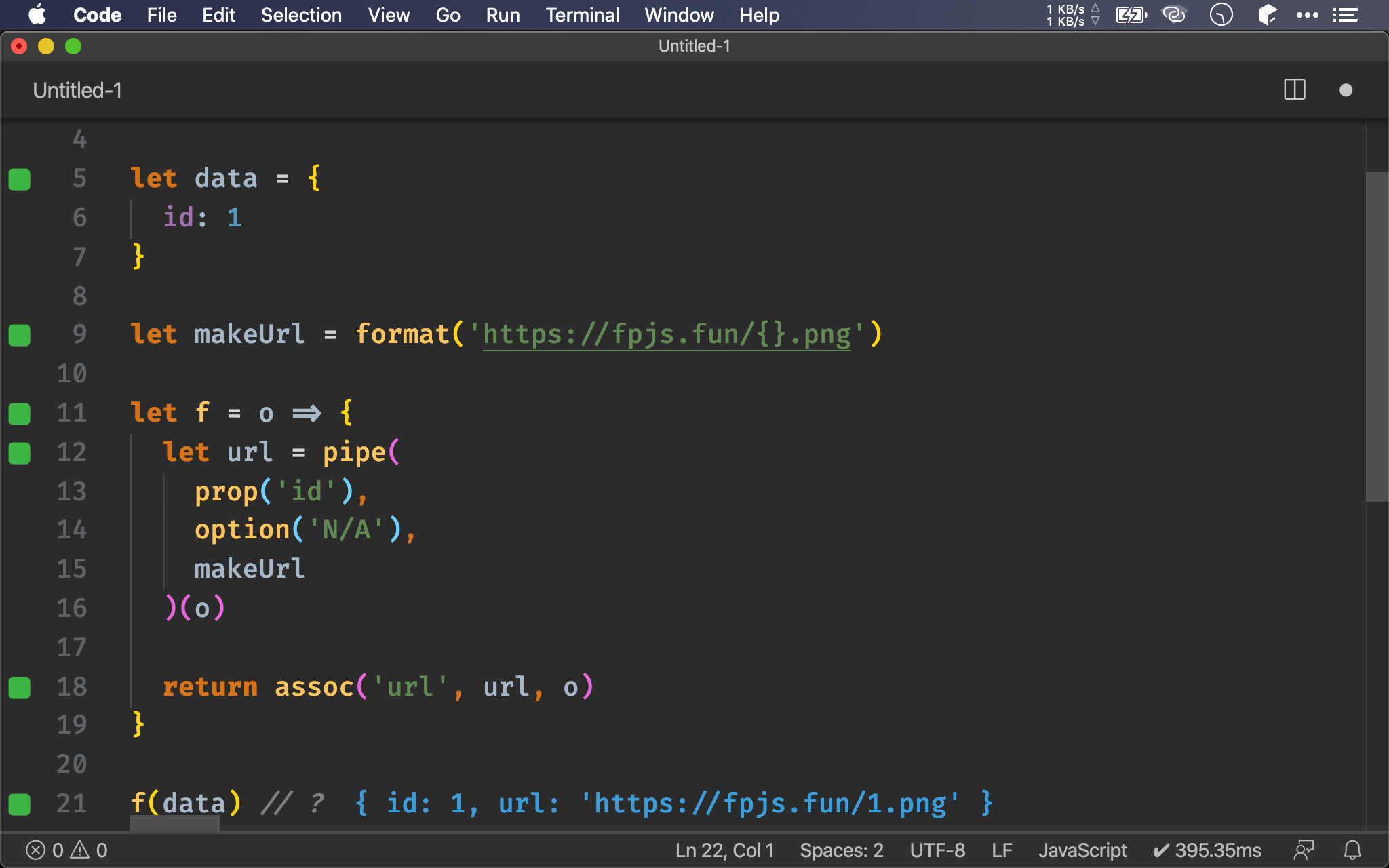
Extract Function
import { pipe, assoc } from 'ramda'
import { prop, option } from 'crocks'
import { format } from 'wink-fp'
let data = {
id: 1
}
let makeUrl = format('https://fpjs.fun/{}.png')
let getUrl = pipe(
prop('id'),
option('N/A'),
makeUrl
)
let f = o => assoc('url', getUrl(o), o)
f(data) // ?
重構第三步是將原 function 內的 function 重構到 funciton 外。
可將 pipe() 所組合 function 獨立成 getUrl()。
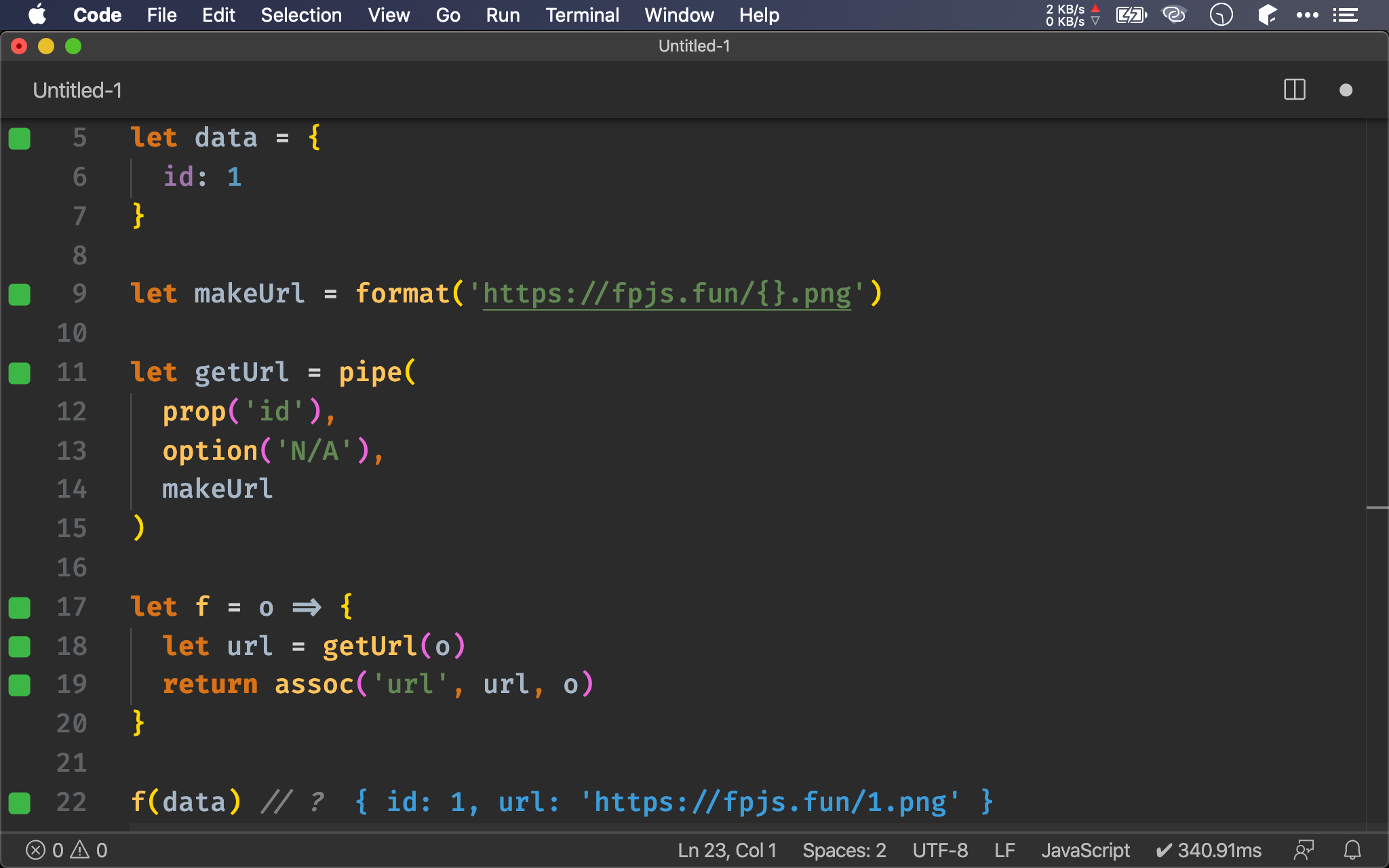
Inline Variable
import { pipe, assoc } from 'ramda'
import { prop, option } from 'crocks'
import { format } from 'wink-fp'
let data = {
id: 1
}
let makeUrl = format('https://fpjs.fun/{}.png')
let getUrl = pipe(
prop('id'),
option('N/A'),
makeUrl
)
let f = o => assoc('url', getUrl(o), o)
f(data) // ?
重構第四步是以 function 取代 variable。
可將 url 以 getUrl() 取代,如此 f() 只有一行而已。
由於 FP 都是 pure function 有 referential transparency 特性,可放心將 variable 以 function 取代
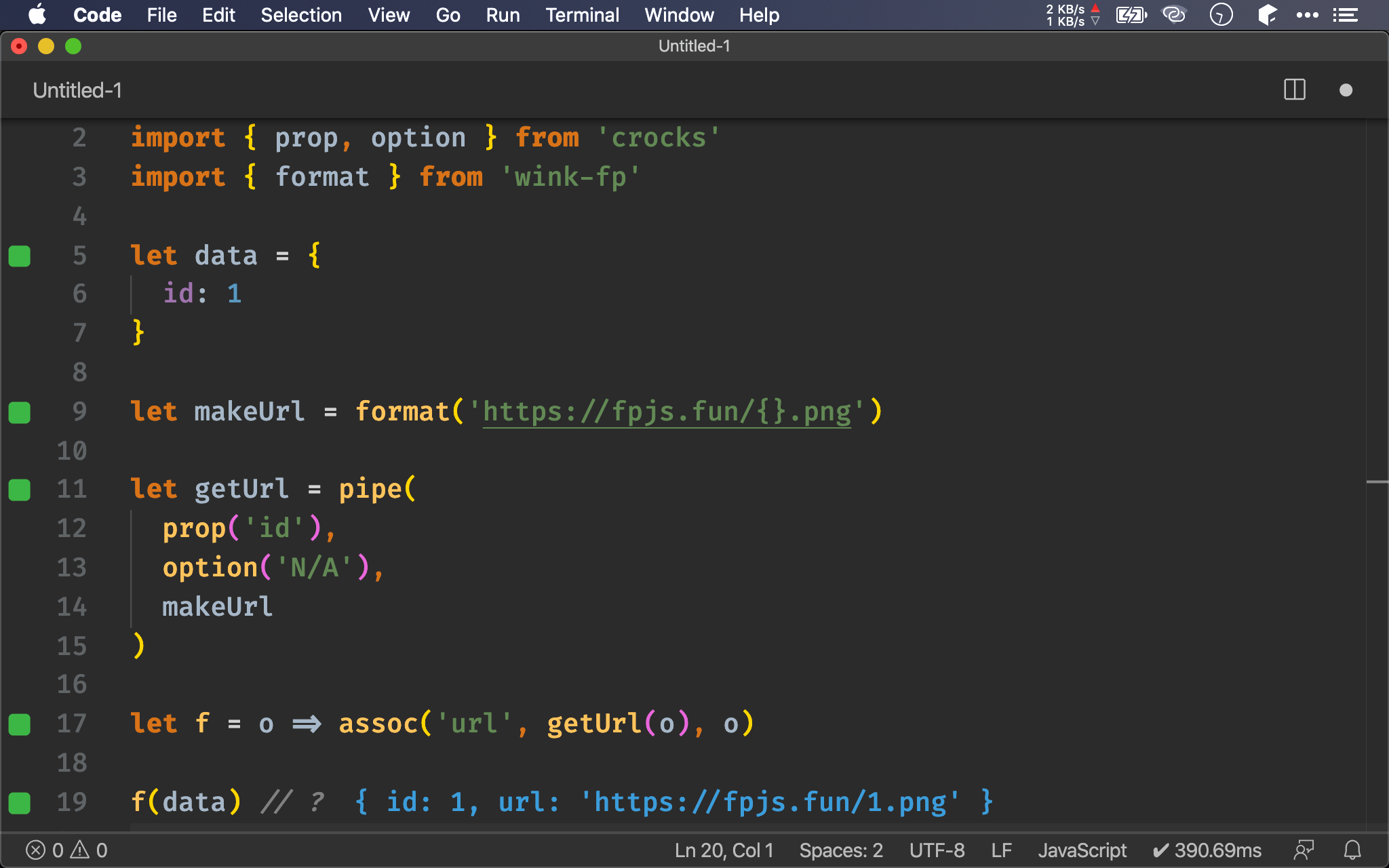
converge()
import { pipe, assoc, converge, identity } from 'ramda'
import { prop, option } from 'crocks'
import { format } from 'wink-fp'
let data = {
id: 1
}
let makeUrl = format('https://fpjs.fun/{}.png')
let getUrl = pipe(
prop('id'),
option('N/A'),
makeUrl
)
let f = converge(
assoc('url'), [getUrl, identity]
)
f(data) // ?
重構第五步是將 function 也 point-free。
f() 的 o argument 可用 converge() 加以 point-free。
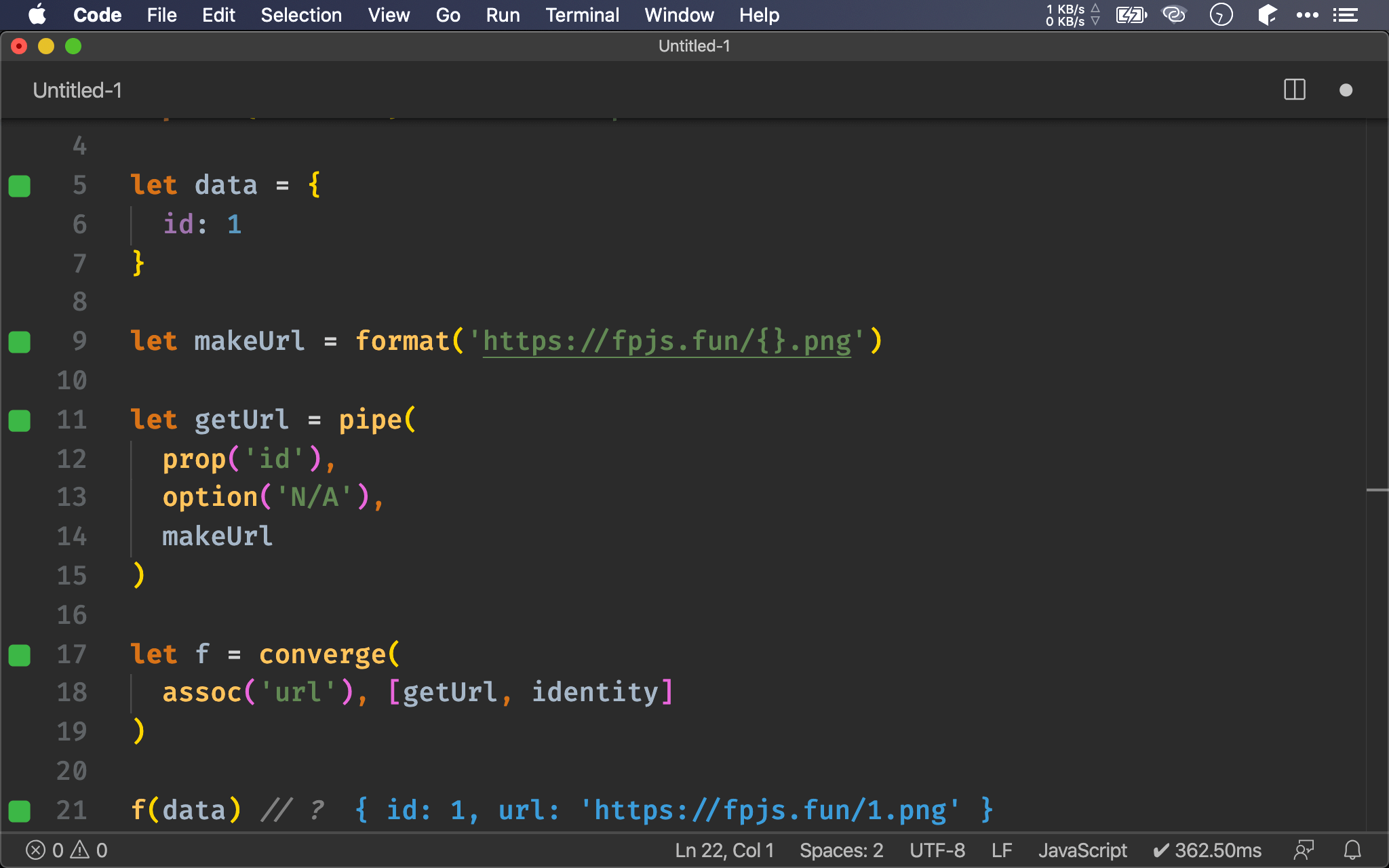
chain()
import { pipe, assoc, chain } from 'ramda'
import { prop, option } from 'crocks'
import { format } from 'wink-fp'
let data = {
id: 1
}
let makeUrl = format('https://fpjs.fun/{}.png')
let getUrl = pipe(
prop('id'),
option('N/A'),
makeUrl
)
let f = chain(assoc('url'), getUrl)
f(data) // ?
重構第六步是以其他 function 取代特定 pattern。
converge() + identity() pattern 剛好是 chain(),可再進一步重構。
這個步驟是 optional,若找得到特定 pattern 則重構,否則到第五步即可
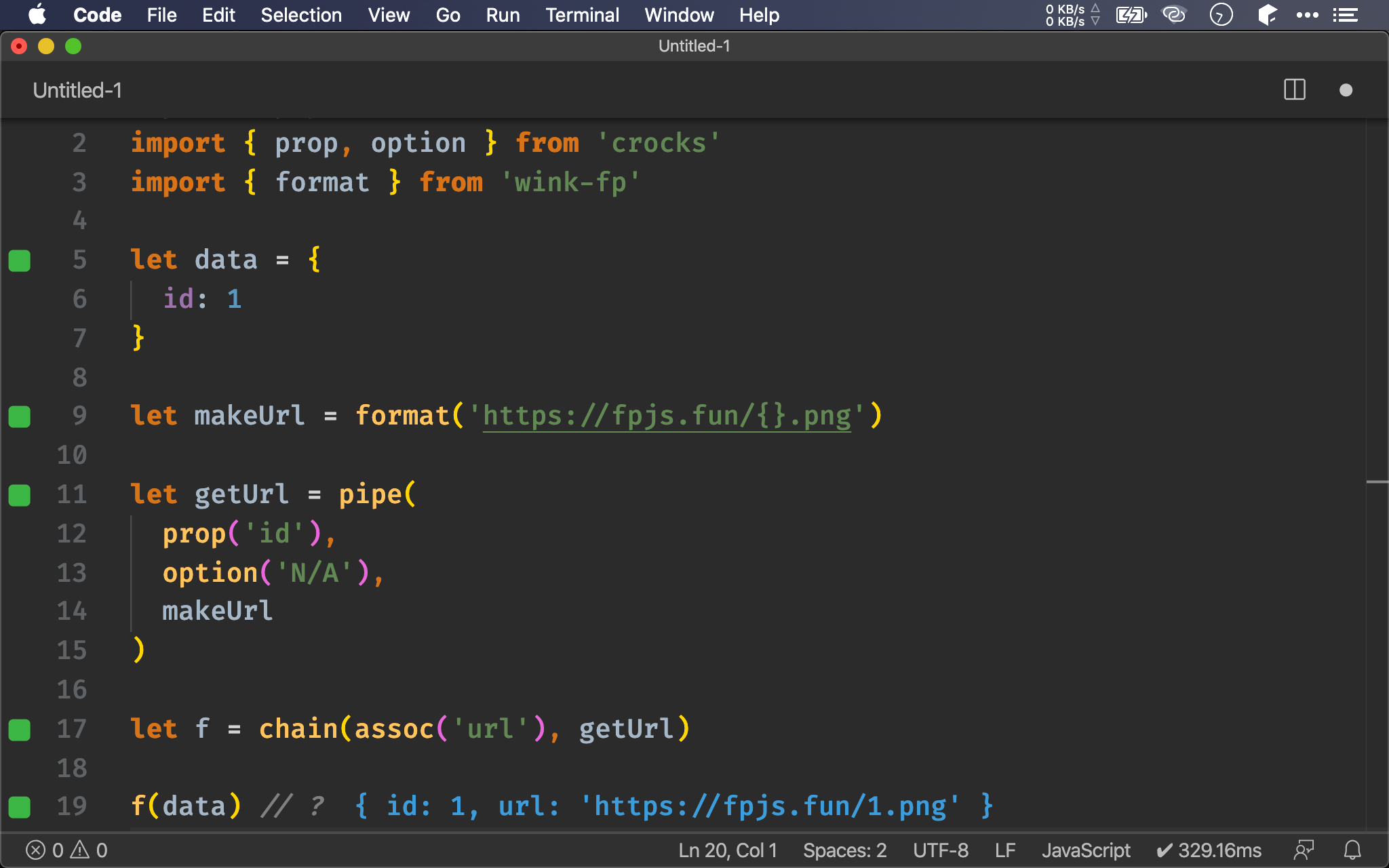
Conclusion
- 本文展示了從 imperative 重構成 FP 的常用 SOP:
- 以 function 取代 operator
- 以
pipe()或compose()組合 function - 將原 function 內的 function 重構到 funciton 外
- 以 function 取代 variable
- 將 function 也 point-free
- 以其他 function 取代特定 pattern
Reference
Andy Van Slaars, Refactor to Point Free Functions with Ramda using compose and converge